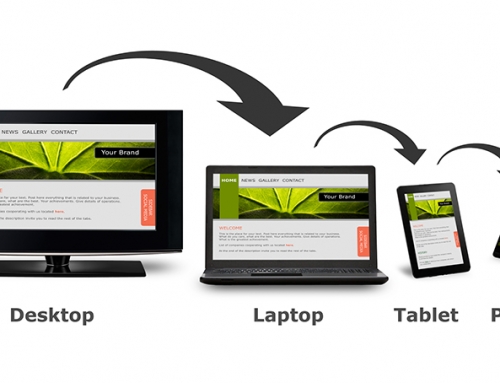How to keep your SMSF compliant even while travelling
Are you an SMSF trustee who loves to travel? Sounds like a great lifestyle, however while planning your summer break you need to be aware that there can be negative consequences if you are out of the country for too long.
If you are a trustee and you relocate overseas for an extended period, the residency status of the SMSF, its compliance status and its ability to receive tax concessions may be affected.
Prevent your SMSF becoming non-compliant
If your SMSF becomes non-compliant it will lose its concessional tax rates (non-compliant funds are taxed at the highest marginal rate). There are three practical considerations you must take care of to retain compliance in these circumstances, however the first of these is relatively easy to satisfy.
- The fund must be deemed to be an “Australian” fund, which for most (if not every) SMSF will be satisfied as the initial contributions are likely to have been made and accepted by the trustee/s in Australia.
- Central management and control of an SMSF is required to be in Australia
- The active member test must be fulfilled.
Central management and control in Australia
If high-level decisions – such as the formulation of an investment strategy or how assets are used to fund member benefits – are made outside of Australia, trustees need to show that “central management and control” of their SMSF is “ordinarily” in Australia and only temporarily conducted from overseas.
In general, an SMSF will still meet the “ordinarily” definition if its central management and control is temporarily done from offshore (“temporarily” being deemed to be for up to two years).
One thing to note however, if the absence is not of a temporary nature, it may be concluded that the fund’s central management and control is not “ordinarily in Australia” prior to the elapse of a two year period.
In the event that the “ordinarily” requirement cannot be satisfied, consider the following options:
- Appoint a legal personal representative with an enduring power of attorney (who could be one of your adult children for instance) to be trustee in place of you. They will have the same power as a trustee, they will make key decisions and take responsibility as you cannot be seen to be making high-level decisions. If you are involved in high-level decision-making from overseas, central management and control has remained with you and will constitute a breach of the rules (and be aware that the ATO can monitor email trails to ascertain if this has happened)
- Wind up the fund and roll benefits over into a retail/industry fund
- Convert the SMSF into a small APRA fund.
Administrative duties are also imposed on trustees, so although you are overseas you may still find yourself needing to sign financial statements. An SMSF with up to two members needs to get all trustees to sign documents, and one with more than two members must have at least two signatures.
Make use of the digital world to cover the distance
Problems will arise if you are overseas and unreachable, as you may need to sign documents. A possible solution to this is to receive all communications through email, but be sure to check that digital signatures can legitimately be used. Or perhaps use an administrator for the fund as they can be responsible for receiving and processing all your paperwork.
If the central management and control of an SMSF is permanently outside Australia, you will not meet the “ordinarily” requirement and your fund may be deemed non-compliant with significant tax consequences.
Active member test must be fulfilled
A member is classified as active if they are a financial contributor to the fund or if financial contributions to the fund have been made on their behalf. One way to satisfy the “active member test” is to ensure that no contributions are made to the SMSF by a non-resident member.
Alternatively, the “active member test” requires that at least 50% of all assets (either based on market value or the value payable to members) are attributable to active members who are Australian residents. It would be pointless to appoint a legal representative to stand in your place if you breach the active member test.
Make sure you address these issues if you are planning to relocate overseas and also seek professional advice to maintain the residency status of your SMSF. Read more from the ATO on SMSFs and the residency rules here.
Is that benefit caught by Division 7A or FBT?
A common occurrence, particularly in family companies, is the provision of benefits to shareholders of a company in which those same shareholders are also directors of the company. The question will then arise; is that payment caught by Division 7A or FBT?
As a general rule, a fringe benefit arises if the company provides a benefit to a director of the company (directors are also employees) in connection with the performance of his or her duties (that is, the benefit is provided in respect of the employee’s employment).
At the same time, the benefit provided may also be subject to Division 7A – which deems the provision of a benefit to a shareholder (or associate) to be an unfranked dividend which is required to be assessed in the hands of recipient.
Broadly, Division 7A is an integrity measure that applies to loans, payments and debt forgiveness made by a private company to a shareholder (or an associate of the shareholder). The extended definition of “payment” under Division 7A includes the provision of an asset for use by the entity (see s109CA).
A typical example where a fringe benefit and payment for Division 7A purposes can happen is the use of a holiday house by a shareholder/director. There is a residual fringe benefit provided by the company as well as a payment for Division 7A purposes.
Tie-breaker tests
Division 7A and the FBT regime contain tie-breaker tests. These tests determine whether the FBT regime or Division 7A prevails where a benefit is provided by a private company to an employee in respect of their employment and also in their capacity as a shareholder.
The benefit type and the tax outcomes are laid out in the table below.
| Division 7A benefit type | Outcome | Reasoning |
| Loan from private company to shareholder/employee (or associate)
|
Division 7A will apply in favour of FBT for loans to shareholder/employees (s109ZB(1) ITAA36). | Specifically, Division 7A will apply to a loan to a shareholder or an associate even if the loan is made to that entity in its capacity as an employee or associate (as defined under FBT law), or in respect of the employment of an employee. Prima facie, the loan is a deemed dividend to the recipient.
The provision of the loan does not constitute a loan fringe benefit as it is excluded from the definition of fringe benefit (see s136(1) – para (r) FBTAA). Note also that the loan is still precluded from being a loan fringe benefit where the loan is taken to be a dividend, but the amount is reduced to nil due to a “nil” distributable surplus (see ATO ID 2011/33). Further, if the loan is placed on a complying loan agreement in accordance with s109N ITAA36 from 1 April 2007, the loan will not be treated as a fringe benefit (s136(1)- para (s) FBTAA). A complying loan satisfies the minimum interest rate and maximum term criteria. This ensures that FBT is not payable for the period in the income year that no interest was required under the loan agreement to be paid on the loan. |
| Debt forgiveness by private company to shareholder/employee (or associate) in respect of loan owed such entities | Division 7A will apply in favour of FBT for debt forgiveness in respect of a loan owed by a shareholder/employees (s109ZB(2) ITAA36). | Specifically, Division 7A will apply to a debt forgiveness by a company in respect of a loan owed by a shareholder or an associate even if the loan is made to that entity in its capacity as an employee or associate (as defined under FBT law), or in respect of the employment of an employee. Prima facie, the loan is a deemed dividend to the recipient.
The forgiveness of the debt owed does not constitute a fringe benefit as it is excluded from that definition (s136(1) FBTAA). As such, a debt waiver fringe benefit has not been provided. |
| Payment* by private company to shareholder/employee (or associate)
|
FBT will apply in favour of Division 7A for payments to shareholders/employees (s109ZB(3) ITAA36).
|
Division 7A does not apply to a payment made to a shareholder, or an associate of a shareholder, in their capacity as an employee or an associate of such an employee.
The payment can be either an expense payment, property fringe benefit or a residual fringe benefit. |
*A payment for Division 7A purposes (s109C ITAA36) includes:
- a payment to the extent that it is to the entity, on behalf of the entity or for the benefit of the entity, and
- a credit of an amount to the extent that it is to (i) the entity; (ii) on behalf of the entity; or (iii) for the benefit of the entity, and
- a transfer of property to the entity.
It also includes the provision of an asset by the company for use by the entity (s109CA ITAA36).
An example
Bob is the sole director and shareholder of ABC Pty Ltd.
The company provides him use of a yacht his own for services rendered as an employee. The provision of the asset for Bob’s use is also a payment for Division 7A purposes.
The company also provided a loan to Bob on interest-free terms in his capacity as an employee. The provision of the loan is also taken to be a loan for Division 7A purposes. It has not been placed on a complying s109N loan agreement.
As the benefits were provided to Bob “in respect of his employment”, the FBT implications to ABC Pty Ltd are as follows:
The provision of the yacht for Bob’s personal use is a residual fringe benefit and is not a deemed dividend pursuant to Division 7A due to the operation of the tie-breaker in s109ZB(3) ITAA36. The benefit is not specifically excluded under the meaning of fringe benefit in s136(1)). Therefore, ABC Pty Ltd will, prima facie, be subject to FBT on the provision of the benefit.
The interest-free loan made by the company to Bob is not a fringe benefit to the extent that it is a deemed dividend pursuant to Division 7A due to the operation of the tie-breaker s109ZB(1) ITAA36. The benefit is specifically excluded under the meaning of fringe benefit in s136(1) para. (r) ITAA36. The company, prima facie, is treated has having paid a deemed dividend to Bob.
Fuel tax credit rate changes
Fuel tax credit rates increased on 1 August 2017. Some of these rates also changed on 1 July 2017, due to a change in the road user charge and an annual increase to excise duty rates on biofuels.
Rates change regularly. They are indexed twice a year, in February and August, in line with the consumer price index (CPI). Rates may also change in July for fuel used in a heavy vehicle for travelling on public roads. This is due to changes to the road user charge, which is reviewed annually. In July, rates also change due to an annual increase in excise duty rates on biofuels.
Use the ATO’s fuel tax credit calculator each time you claim to save time and help get your claim right. It’s easy to use and has all the up-to-date rates, so there’s no need to find them before you work out a claim.
The ATO advises that fuel tax credit rates for heavy vehicles that use taxable fuel such as diesel or petrol, and travel on public roads, increased to 14.5 cents per litre due to a decrease in the road user charge.
Biodiesel and fuel ethanol manufactured in Australia changed due to excise duty rates taking effect for biofuels.
See here for all the latest fuel rates.
The ATO says eligible business owners will need to apply the correct rate when they calculate the fuel tax credit claim on business activity statements.
Simplified fuel tax credits
The ATO also reminds business principals that if they claim less than $10,000 in fuel tax credits each year, they can now choose simpler ways to keep records and calculate claims.
You can:
- use one rate in a BAS period – the rate that applies at the end of the BAS period
- work out your litres based on the cost of the fuel you purchased.
You can choose to use either or both of these methods that best suits your needs and can change them at any time. The ATO says a business does not need to register or advise it that you are using these methods.
It also advises that there are a range of documents that can be used to substantiate claims (which need to be kept for five years). Accepted documents can include:
- contractor statements
- financial institution business credit/debit account statement
- financial institution personal credit/debit account statement
- point-of-sale docket
- fuel supplier statement or invoice.
Also see:





